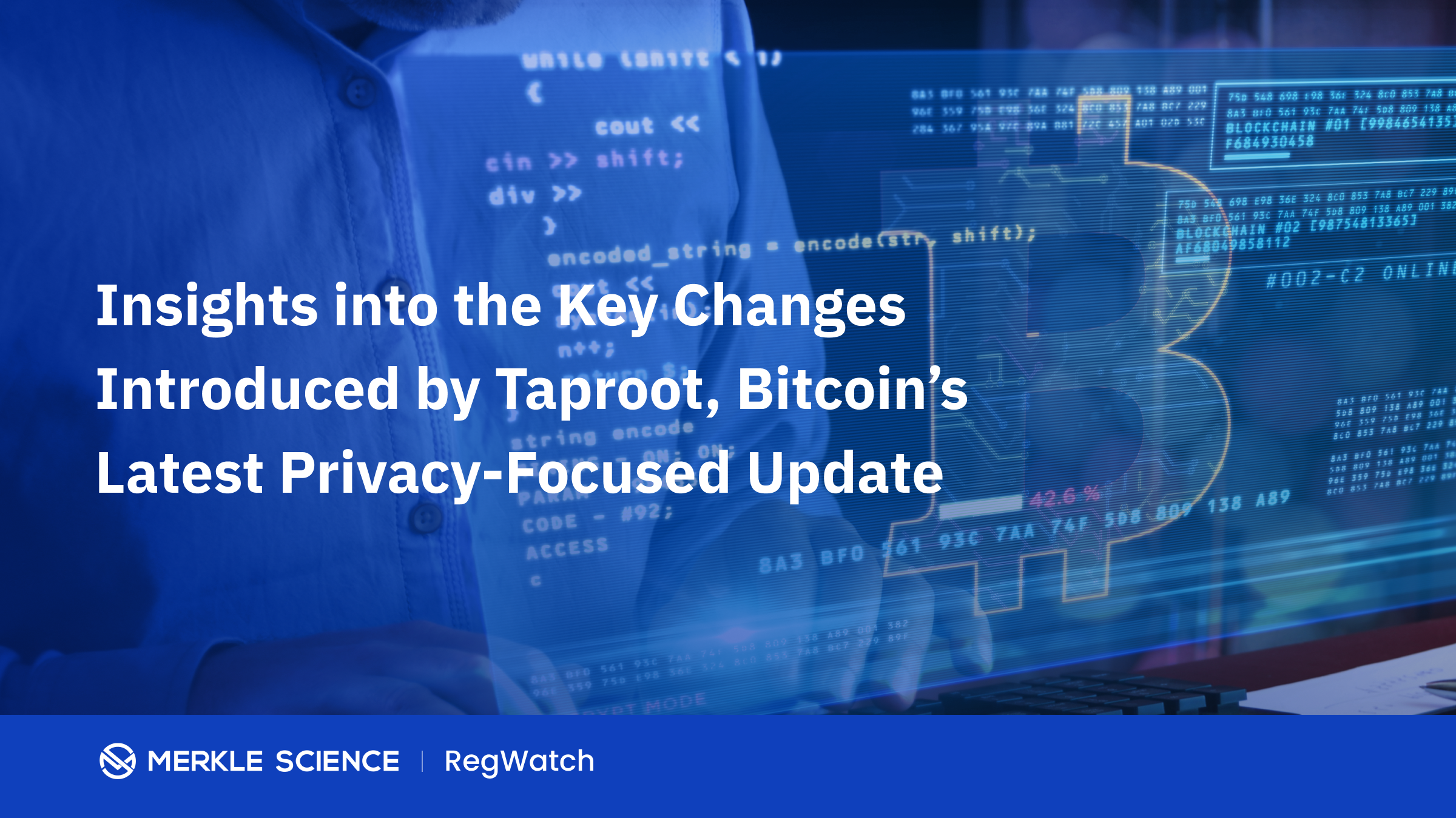Bitcoin Gets Much-Anticipated Taproot Upgrade: Here is What the Users Need to Know

Merkle Science

On November 14, 2021 Bitcoin Taproot upgrade went live when the Bitcoin blockchain reached the block limit of 709,632. The Taproot proposal was first introduced in January 2018 by Bitcoin core developer Greg Maxes. Three years later, on June 12, 2021, a 90% supermajority of Bitcoin miners voted for the Taproot upgrade. Taproot isn’t just a single update, but a combination of three different Bitcoin Improvement Protocols (BIPs) -— BIP 340, 341, and 342. These protocols seek to introduce more privacy, better smart contracts, and cheaper transaction costs to the network.
How do updates on Bitcoin happen?
Essentially, a person or group of people who have influence over Bitcoin core such as core developers introduce a proposal which has to be approved by the miners. Once the proposal is approved it can be implemented on the blockchain.
The present upgrade can be categorized as a soft fork. Soft forks are subtle alterations in a blockchain that have to be accepted by miners. Once accepted by miners, a soft fork is implemented and the original blockchain remains valid and miners continue to mine in that chain.
Another type of updates known as hard forks happen when miners vote for a significant change to the Bitcoin blockchain protocol. A hard fork may lead to the creation of a new blockchain. Further, after a hard fork, both the old and new versions of the blockchains persist, separate and side by side. An example of this would be the Bitcoin Cash hard fork. In order to optimize bitcoin transactions, Bitcoin core programer Pieter Wullie introduced SegWit — i.e. Seg (separate) and witness (transaction signatures).The upgrade segregated a transaction into two sections, thereby increasing the amount of transactions in a block, and, ultimately, increasing the capacity of the entire network. The upgrade, however, was a hard fork which resulted in the creation of Bitcoin Cash.
What does the Taproot upgrade do?
Schorr Signatures Algorithm — Bitcoin Taproot upgrade through BIP340 replaces Bitcoin’s current elliptic curve digital signature algorithm (ECDSA) with the Schnorr Signatures Algorithm (SSA). SSA introduces a key aggregation technique that allows multisig transactions and smart contracts to commit the same amount of data to a Bitcoin Blockchain as a standard single transaction.
Under multisig transactions, there is a requirement for a single transaction to have more than one signature for it to be executed. This makes the transaction more secure when compared to monosig transactions. SSA aggregates multisig transactions and their corresponding keys under one combined key, thereby making them indistinguishable from monosig transactions. Therefore, a single aggregated public key and a single aggregated signature are recorded, instead of all the public keys and signatures of the participants involved in a transaction.
SSA aggregates multiple transactions by hashing them under one transaction and assigning a unique key, which can be useful for streamlining various Bitcoin applications like Bitcoin-based funds where transactions happen from multiple parties to one wallet. This means that if 4 different users sent BTC to a single wallet address (public key) under the current setup, it would appear on Bitcoin's ledger as 4 separate transactions. However, by using SSA, Bitcoin's network will be able to bundle these 4 transactions into one transaction with a unique key. Further, these smaller transaction sizes created through data aggregation will significantly lower the transaction fee.
Merkalized Alternative Script Tress (MAST) — Protocol BIP341 improves the privacy innovation of SegWit and implements Merkilized Alternative Script Trees (MAST). MAST is a data structure/hash tree that enables verification of various pieces of information related to a particular data element or data set as a whole without the need to have access to the full data. Basically, Merkle Trees are used to prove data exists in a set without having to reveal the entire set.
Previously, Bitcoin used the pay to script hash (P2SH) instead of MAST. Under P2SH, once the tokens are spent, all necessary conditions including the other conditions which could have been fulfilled but weren’t met are also stored. However, under MAST only executed conditions of a smart contract can be stored in the Bitcoin blockchain rather than full details of all other possible outcomes, thereby reducing the amount of data stored on-chain.
MAST not only enhances privacy but also increases efficiency in data storage. With the use of MAST, conditions placed on a transaction can all be condensed into one script, which means they will take up less data. Therefore, with lesser data involved, transactions will become more time- and cost- efficient.
Further, BIP 342 introduces ‘transcript’ which will update the script coding language used to write Bitcoin transaction parameters. This upgrade is made to accommodate Schnorr Signatures and Taproot Technology.
How Can Merkle Science Help?
Increased privacy in multisig transactions will also lead to increased AML risks. Crypto businesses looking to stay compliant should proactively put a robust AML/CFT compliance plan in place. Merkle Science provides a predictive crypto risk and intelligence platform, setting the standard for the next generation of financial safeguards and criminal detection. We are creating the infrastructure necessary so that a full range of individuals, entities, and services may transact safely with crypto.
Merkle Science’s highly customizable platform and proprietary Behavioral Rule Engine is easy-to-use, allowing institutions to detect illicit activity beyond the blacklists so that FIs may catch undetected suspicious activity that legacy providers might miss and better-meet AML and KYC obligations as per guidance from jurisdictions around the world.
To find out how Merkle Science works for your business, please contact us.


